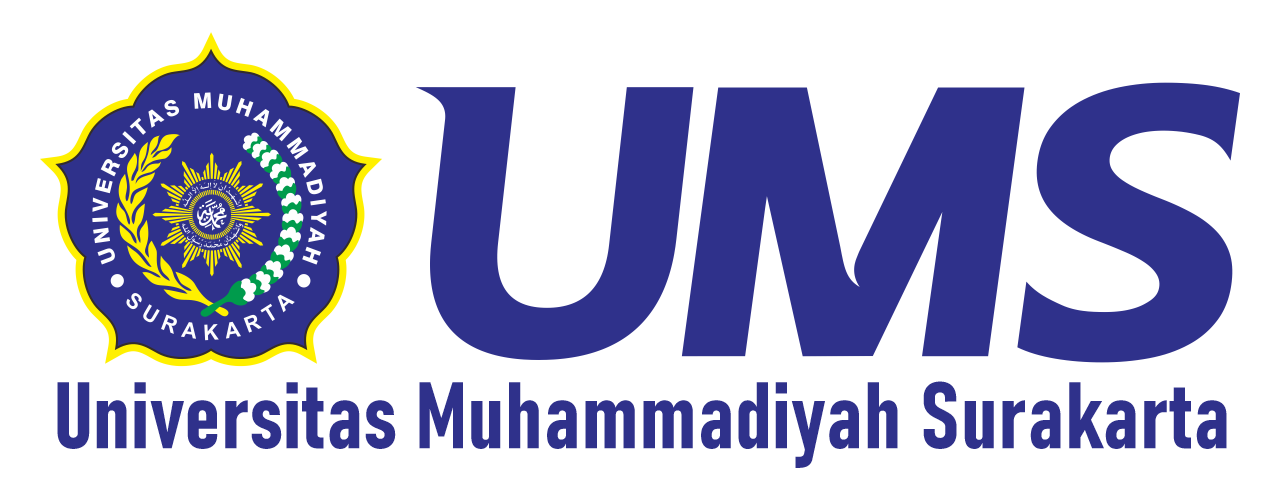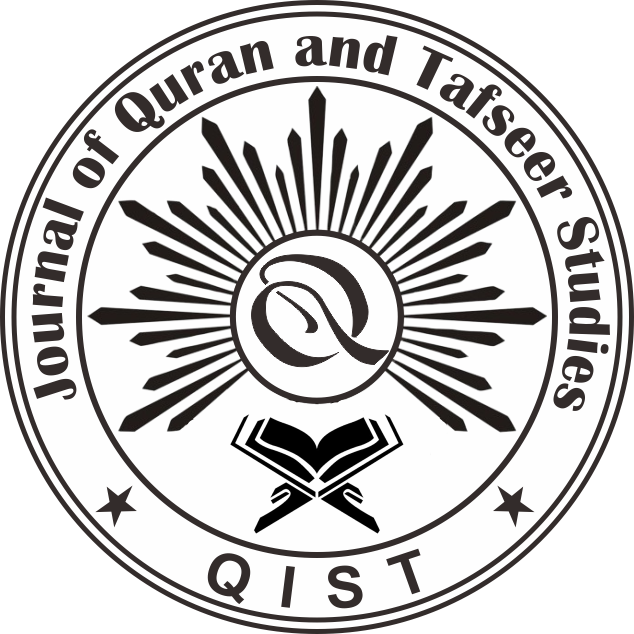Integration of Islamic Religious Education, Al Quran Science and General School Subjects at Adzkia Babalan Integrated Islamic Junior High School, Langkat Regency
DOI:
https://doi.org/10.23917/qist.v4i1.8905Keywords:
Al-Qur'an; Educational Integration, PAI, Al-Qur'an Science, General School SubjectsAbstract
This research is motivated by the dichotomy of Islamic Religious Education with general learning in junior secondary education in Integrated Islamic schools which today are increasingly seen in the world of education, especially Islamic education. The method used in this study is qualitative phenomenology. The collection method was carried out by observation, documentation, and interviews. To obtain the validity of the data, it is tested with validity and data analysis which includes data reduction, data presentation and conclusion drawn. The planning guide is a combination of the official curriculum and the JSIT curriculum consisting of the Independent and INTEGRATED Curriculum Learning Implementation Plan (Exploratory Study, Formulate, Presentation, Apply Duniawi Ukhrawi). The implementation of learning integration is in the classroom delivered by general subject teachers to provide understanding and awareness to students about the learning integration materials of PAI, Qur'an and General Sciences. This integration is synergized in supporting programs such as masta (student ta'aruf period), mabit (night of faith and taqwa development), dauroh (training), BPI (Islamic Personal Development), worship habituation. The analysis method in this paper adopts the basic principles of value education in Islam, namely monotheism, science and morals, which is based on the scientific integration between general science and religious science (non-dichotomous). The integration of Islamic values in general subjects is manifested in the learning pattern of PAI and Qur'an Science which comprehensively (integral-holistic) respects the existence of general subjects as general sciences and Islamic studies as religious sciences while responding to the needs of society and families. In its implementation, the learning heeds the values of monotheism, stimulates the continuous search for knowledge and pays attention to the moral and noble aspects of students.
References
[1] S. Huda, Integrasi Ilmu Antara Wacana dan Praktif: Studi Komparatif UIA Malaysia & UIN Malang, vol. 53, no. 9. 2020. https://repository.iainkediri.ac.id/127/
[2] L. S. Badri and A. A. Malik, "Implementation of Islamic Education Values in Building Students' Religious Character through an Affective Approach Based on the Qur'an," J. Pendidik. Agama Islam, vol. 21, no. 1, pp. 217-233, 2024, doi: https://doi.org/10.14421/jpai.v21i1.7260.
[3] Mahmudulhassan, W. Waston, A. Nirwana, S. Amini, M. M. A. Sholeh, and M. Muthoifin, "A moral-based curriculum to improve civilization and human resource development in Bangladesh," Multidiscip. Rev., vol. 7, no. 8, p. 2024137, May 2024, doi: https://doi.org/10.31893/multirev.2024137.
[4] A. Bakar, Integrasi keilmuan, 1st ed. Sulawesi Selatan: IAIN Parepare Nusantara Press, 2022.
[5] P. Siregar, "INTEGRASI ILMU-ILMU KEISLAMAN DALAM PERSPEKTIF M. AMIN ABDULLAH," MIQOT J. Ilmu-ilmu Keislam., vol. 38, no. 2, pp. 335-354, Dec. 2014, doi: https://doi.org/10.30821/miqot.v38i2.66.
[6] J. Juhji, M. Rahmatullah, W. Noor, S. Zuhri, M. Mansur, and P. Nuangchalerm, "Exploring the Relationship between Prophetic Leadership and Job Satisfaction of Madrasah Ibtidaiyah Teachers in Indonesia," Munaddhomah, vol. 6, no. 1, pp. 13-28, 2025, doi: https://doi.org/10.31538/munaddhomah.v6i1.1462.
[7] A. Abdullah et al., "Integration of Tahfiz and Academic Education," Glob. J. Al-Thaqafah, vol. DECEMBER2024, no. SPECIALISSUE, pp. 60-72, 2024, doi: https://doi.org/10.7187/GJATSI122024-5.
[8] A. N. Andri Nirwana et al., "SWOT Analysis of AI Integration in Islamic Education: Cognitive, Affective, and Psychomotor Impacts," Qubahan Acad. J., vol. 5, no. 1, pp. 476-503, 2025, doi: https://doi.org/10.48161/qaj.v5n1a1498.
[9] P. Pairin, S. Syahrul, B. Badarwan, and S. Samrin, "The Integration of the Islamic and Customary Law in Tolaki Society, Southeast Sulawesi: Islamic History and Education Perspectives," Samarah J. Huk. Kel. dan Huk. Islam, vol. 8, no. 3, p. 1669, Aug. 2024, doi: https://doi.org/10.22373/sjhk.v8i3.24055.
[10] S. I. Shadiqin, M. N. Ichwan, T. M. Fuadi, and N. Kim, "MUDA WALY AL-KHALIDI (1917-1961): PESANTREN, TARIQAH, AND POLITICS OF RELIGIOUS AUTHORITY IN ACEH," J. Ilm. Islam Futur., vol. 25, no. 1, pp. 67-93, 2025, doi: https://doi.org/10.22373/jiif.v25i1.14233.
[11] A. Ghufron and W. Wuryandani, "Integrating Maja Labo Dahu culture in Islamic education: a module for character development in elementary students," J. Educ. Learn., vol. 19, no. 2, pp. 711-723, 2025, doi: https://doi.org/10.11591/edulearn.v19i2.21801.
[12] A. W. Ritonga, A. Desrani, Y. Rubiyantoro, and M. D. Hude, "THE PROGRAM FOR SELF-REGULATED LEARNING: AN EMPIRICAL STUDY ON STUDENTS-SURVIVAL SKILLS IN PESANTREN," J. Ilm. Peuradeun, vol. 13, no. 1, pp. 625-646, 2025, doi: https://doi.org/10.26811/peuradeun.v13i1.1483.
[13] A. Masuwai, H. Zulkifli, and M. I. Hamzah, "Self-assessment for continuous professional development: The perspective of Islamic Education," Heliyon, vol. 10, no. 19, 2024, doi: https://doi.org/10.1016/j.heliyon.2024.e38268.
[14] M. Yusuf, M. Rasidin, D. Witro, and A. Nurjaman, "The role of Islamic boarding schools in student empowerment: Study of Anak Jalanan At-Tamur Islamic boarding school in Bandung Regency," Kasetsart J. Soc. Sci., vol. 45, no. 3, pp. 779-790, 2024, doi: https://doi.org/10.34044/j.kjss.2024.45.3.09.
[15] K. Hambali, M. S. Kamis, M. A. L. A. Lubis, and K. A. Razak, "Pilot Study on Islamic Education Teachers' Perspectives on Mentoring Practices by the Head of the Islamic Education Panel and Their Impact on Teacher Quality," Pakistan J. Life Soc. Sci., vol. 22, no. 2, pp. 9084-9095, 2024, doi: https://doi.org/10.57239/PJLSS-2024-22.2.00688.
[16] F. Fahrurrozi, "Strengthening Islamic Education Leadership: An Analysis of School-Based Management Training Follow-up Programs," Millah J. Relig. Stud., vol. 23, no. 2, pp. 645-680, Aug. 2024, doi: https://doi.org/10.20885/millah.vol23.iss2.art5.
[17] A. Salim, I. Suyuti, W. K. Prihantoro, A. Muqorrobin, and E. Nawangsasi, "Integrating Javanese culture in Islamic education: the role of Pathok Negara Mosque," Indones. J. Islam Muslim Soc., vol. 14, no. 2, pp. 381-407, 2024, doi: https://doi.org/10.18326/ijims.v14i2.381-407.
[18] M. A. Mustafa, "The Degree of Implementation of Authentic Assessment Strategies as Estimated by Islamic Education Teachers," An-Najah Univ. J. Res. - B, vol. 38, no. 7, pp. 1309-1336, 2024, doi: https://doi.org/10.35552/0247.38.7.2235.
[19] M. Yunpeng and M. Y. Zulkifli Mohd Yusoff, "A Comparative Study of Educational Thoughts in the Analects and the Quran: The lntegration of Islamic and Confucian Education in Ma Lianyuan' s Philosophy," Quranica, vol. 16, no. 1, pp. 1-25, 2024, [Online]. Available: https://www.scopus.com/inward/record.uri?eid=2-s2.0-85217011177&partnerID=40&md5=2e1abe9aa6b4563ca4bd09868016d318
[20] A. Mujahidin, I. Abdullah, and A. Choirul Rofiq, "Students' critical awareness of the internet and social media use as resources for Islamic learning in Indonesian public senior high schools," Br. J. Relig. Educ., vol. 47, no. 2, pp. 140-155, 2025, doi: https://doi.org/10.1080/01416200.2024.2368888.
[21] A. Succarie, "Examining the Implications of Islamic Teacher Education and Professional Learning: Towards Professional Identity Renewal in Islamic Schools," Educ. Sci., vol. 14, no. 11, 2024, doi: https://doi.org/10.3390/educsci14111192.
[22] A. Awaludin, "Documenting the Half-Century Evolution of Islamic Education Research: A Probabilistic Topic Modeling Study of the Literature from 1970 to 2023," Stud. Islam., vol. 31, no. 3, pp. 439-475, 2024, doi: https://doi.org/10.36712/sdi.v31i3.41513.
[23] M. Muhajir, S. Ngaisah, S. Syukri, A. Azhar, and M. Ibnusaputra, "The Impact of Achievement Grouping to Improve Understanding of Islamic Education Material," Educ. Process Int. J., vol. 14, 2025, doi: https://doi.org/10.22521/edupij.2025.14.71.
[24] E. R. K. Wati, Y. K. Nengsih, C. Handrianto, and M. A. Rahman, "The quality of teacher-made summative tests for Islamic education subject teachers in Palembang, Indonesia," Cakrawala Pendidik., vol. 43, no. 1, pp. 192-203, 2024, doi: https://doi.org/10.21831/cp.v43i1.53558.
[25] A. Saiin and M. Karuok, "THE CONCEPT OF SENSE IN THE QUR'AN: TAZAKKUR, NAZARA, AND TADABBUR AS THE BASIC HUMAN POTENTIAL TOWARDS A SUPERIOR HUMAN BEING," QiST J. Quran Tafseer Stud., vol. 2, no. 1, pp. 44-62, Dec. 2022, doi: https://doi.org/10.23917/qist.v2i1.1288.
[26] K. Alkandari, "Engagement, Interaction, and Socialization of Islamic Education Pre-service Teachers through Virtual Discussions," SAGE Open, vol. 14, no. 2, 2024, doi: https://doi.org/10.1177/21582440241255844.
[27] A. I. Hartafan, A. Nirwana AN, and C. L. Marheni, "BIBLIOMETRIC ANALYSIS THE ROLE OF ISLAMIC PSYCHOLOGY BASED ON QUR'AN IN OVERCOMING ANXIETY AND IMPROVING MENTAL HEALTH AMONG WOMEN," QiST J. Quran Tafseer Stud., vol. 3, no. 2, pp. 303-326, Mar. 2024, doi: https://doi.org/10.23917/qist.v3i2.5042.
[28] C. Chotimah, S. Z. Qudsy, and M. Yusuf, "Superficial implementation of religious moderation in Islamic educational management," Cogent Educ., vol. 12, no. 1, 2025, doi: https://doi.org/10.1080/2331186X.2024.2442235.
[29] A. Nirwana AN, F. Arfan, F. Dolles Marshal, C. Maulana, and N. Fadli, "Methods of Qur'an Research and Quran Tafseer Research its implications for contemporary Islamic thought," Bull. Islam. Res., vol. 2, no. 1, pp. 33-42, Jun. 2024, doi: https://doi.org/10.69526/bir.v2i1.34.
[30] V. M. Welten and A. J. Reich, "Qualitative methods and mixed methods," in Handbook for Designing and Conducting Clinical and Translational Surgery, Center for Surgery and Public Health, Brigham and Women's Hospital, Harvard Medical School, Boston, MA, United States: Elsevier, 2023, pp. 281-286. doi: https://doi.org/10.1016/B978-0-323-90300-4.00091-4.
[31] I. Tshabangu, S. Ba', and S. M. Madondo, "Qualitative Methods in Research: Alternative Approaches and Navigating Complexities," in Research Anthology on Innovative Research Methodologies and Utilization Across Multiple Disciplines, Leeds Trinity University, United Kingdom: IGI Global, 2022, pp. 587-603. doi: https://doi.org/10.4018/978-1-6684-3881-7.ch030.
[32] M. Shaikjee, S. Mpendukana, and C. Stroud, "Qualitative Methods," in The Bloomsbury Handbook of Linguistic Landscapes, Linguistics Department, University of the Western Cape, Cape Town, United Kingdom: Bloomsbury Publishing Plc., 2024, pp. 19-33. [Online]. Available: https://www.scopus.com/inward/record.uri?eid=2-s2.0-85198466131&partnerID=40&md5=6f46c4caeb87e82fa5c5e3758be11266
[33] A. Muir, "Digital library research," in Handbook of Information Management, 8th Edition, Information Science, Loughborough University, United Kingdom: Taylor and Francis, 2003, pp. 518-532. doi: https://doi.org/10.4324/9780203403914-31.
[34] L. Levin and S. Forward, "Explaining Data Analysis Using Qualitative Methods," in International Encyclopedia of Transportation: Volume 1-7, vol. 7, Swedish National Road and Transport Research Institute, Sweden: Elsevier, 2021, pp. 107-112. doi: https://doi.org/10.1016/B978-0-08-102671-7.10668-2.
[35] M. K. Kossman and K. L. Kucera, "Qualitative methods and mixed methods," in Translational Sports Medicine, School of Health Professions, University of Southern Mississippi, Hattiesburg, MS, United States: Elsevier, 2023, pp. 233-241. doi: https://doi.org/10.1016/B978-0-323-91259-4.00089-8.
[36] M. A. Hasan dan M. Kholik, "Peran Guru Muatan Lokal Keagamaan Dalam Peningkatkan Kemampuan Membaca Al-Qur'an Pada Siswa di SMP Negeri 1 Mojoagung," Irsyaduna J. Stud. ..., vol. 2, no. 1, hal. 1-14, 2022, [Daring]. Tersedia pada: https://jurnal.stituwjombang.ac.id/index.php/irsyaduna/article/view/404
[37] P. Siregar, "Integrasi Ilmu-Ilmu Keislaman Dalam Perspektif M. Amin Abdullah," MIQOT J. Ilmu-ilmu Keislam., vol. 38, no. 2, hal. 335-354, 2014, doi: 10.30821/miqot.v38i2.66.
[38] Z. Abdussamad, Metode Penelitian Kualitatif, 1 ed., vol. 13, no. 1. Makassar: Cv. Syakir Media Press, 2021.
[39] Salminawati, "Mengintegrasikan Nilai-Nilai Lokal Dalam Pendidikan," no. 95, hal. 4-6, 2018.
[40] A. Juanda, Kurikulum dan Pembelajaran, Teori dan Praktik KTSP dari Teori Hingga Implementasi Kurikulum. 2016.
[41] M. Firdaus, P. Yayasan, dan S. Mantofani, Integerasi Ilmu Agama Dan Ilmu Umum. 2020.
[42] A. Faruk, "Model Integrasi Pendidikan Agama Islam Dengan Ilmu Pengetahuan Umum Dalam Proses Pembelajaran Di Smp It Abu Bakar Yogyakarta," UIN Yogyakarta, vol. 1, 2017.
[43] S. W. H. Das, A. Halik, dan Sardi, Integrasi Islam dan Sains dalam Pembelajaran Pendidikan Agama Islam, I. Sulawesi Selatan: PT Agma Kreatif Indonesia, 2023.
[44] S. Putrawangsa dan siti N. Dkk, "Buku Strategi Pembelajaran," 2019.
Submitted
Accepted
Published
How to Cite
Issue
Section
License
Copyright (c) 2025 Nur Atika, S Salminawati, Zaini Dahlan

This work is licensed under a Creative Commons Attribution 4.0 International License.
















